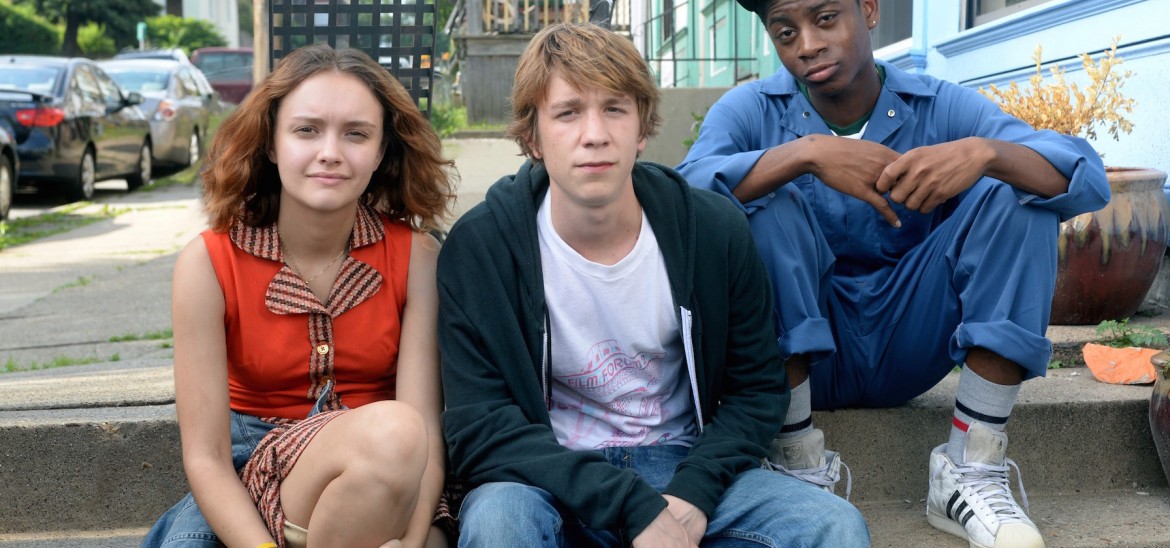Into Film Clubs
Find out everything you need to know about starting an Into Film Club.



A poignant coming-of-age story, this is an extremely funny, deeply moving film about friendship, loss, identity and creativity.
Based on his novel of the same name, Jesse Andrews' script found its way onto the Hollywood Black List in 2012. The Black List is an annual survey of the most popular un-produced screenplays of the year. Since starting in 2004, it has led to the eventual success of films like Slumdog Millionaire, Argo, Whiplash and Juno, giving them crucial exposure to film producers and ensuring that they got made. The name is a cheeky reference to an infamous part of Hollywood history, when in the 1950s, screenwriters, actors and directors were barred from working in the film industry based on their alleged political beliefs.
This is the first time Jesse has written a film script. He was totally inexperienced beforehand, but producer Dan Fogelman - a successful screenwriter of films including Disney's Tangled - acted as a mentor throughout the process. Encouragement and belief from peers and those with more experience under their belt is crucial for any aspiring filmmaker. They needn't be established Hollywood professionals like Jesse had, but showing your work to anybody before it's completed offers up valuable advice and insights you might not have considered.
The book and film are both very personal to Jesse, which even extended to the shooting locations. Most of the filming took place in his home city of Pittsburgh, with some scenes filmed in Jesse's old high school, and even his own childhood bedroom. This lends the film an independent, grassroots feel that's in keeping with its themes and key characters, as well as adding a sense of authenticity for the filmmakers.
Director Alfonso Gomez-Rejon also benefitted from impressive mentors early in his career. Like most filmmakers, Alfonso was not able to immediately start making his own films professionally, but he served as a personal assistant and second-unit director (somebody who shoots supplementary footage on a film, such as cutaways, establishment shots and stunt-work that do not involve the principal actors) for Nora Ephron, Alejandro Inarritu and Martin Scorsese. Alfonso and Jesse are two great examples of the various ways people can enter the film industry with hard-work - if you have the talent, persistence, patience and willingness to learn from others, you can succeed.
The film is very much in the tradition of classic teen movies, such as those by John Hughes in the 1980s (Ferris Bueller's Day Off, The Breakfast Club), and more recent titles like The Fault In Our Stars and The Perks of Being a Wallflower. There are lots of recognisable tropes from high school films on display - but that's not all the film offers.
Unlike most teen movies, Me and Earl and the Dying Girl is distinctly NOT a romance. The filmmakers were very clear that they wanted to tell a story about the importance of friendship, rather than romantic love.
The film had its world premiere at the Sundance Film Festival, receiving a huge ovation and winning several awards. Sundance is perhaps the most famous independent film festival in the world. Many of today's most important directors got their big breaks at the festival, including Darren Aronofsky, Steven Soderbergh, Quentin Tarantino and Lisa Cholodenko. We're willing to bet that all of them started off making small, modest, and personal films in their own time, just like Greg.
Greg and Earl spend much of their time making their own comical homages to some of their favourite films. Production of these mini movies was handled by Wes Anderson collaborators Ed Bursch and Nathan O'Marsh. The films chosen reflect the fact that the teenagers are serious film nerds - even slightly snobbish - but are also very silly, with some wonderfully bad puns as their titles. Examples are Citizen Kane (Senior Citizen Cane), Breathless (Breathe Less), The 400 Blows (The 400 Bros) and The Red Shoes (The Rad Shoes).
Juvenile spins on classic movies, Greg and Earl's films were designed to look and feel like they were really produced by 17 year-olds. As such, they all have realistic budgets and technical limitations, using whatever filmmaking tools the characters could plausibly get their hands on, including camera phones, 8mm, and even an old skateboard used as a dolly. The intention was to replicate as closely as possible the sorts of films teenagers might actually be making.
The mini-movies are not just in-jokes, though - they demonstrate how Greg is learning to express his emotions and channel his creativity. As the story develops, this becomes increasingly complex. His final film is made up of homages to famous artists such as Andy Warhol and Stan Brakhage, and uses images to express emotions in an abstract, but very moving and mature way.
As well as these mini-movies, lovers of film history should keep an eye out for other references to classic filmmakers littered throughout, including Martin Scorsese and Nora Ephron, as well as legendary documentarians Errol Morris and Werner Herzog, and British filmmakers Michael Powell and Emeric Pressburger.
Me and Earl and the Dying Girl demonstrates the power that a creative tool such as filmmaking can have, particularly for those having difficulty expressing themselves. We really hope watching this film makes you want to pick up a camera or a phone and make your own - if you aren't already!

Find out more about our streaming service, designed specifically for UK schools.